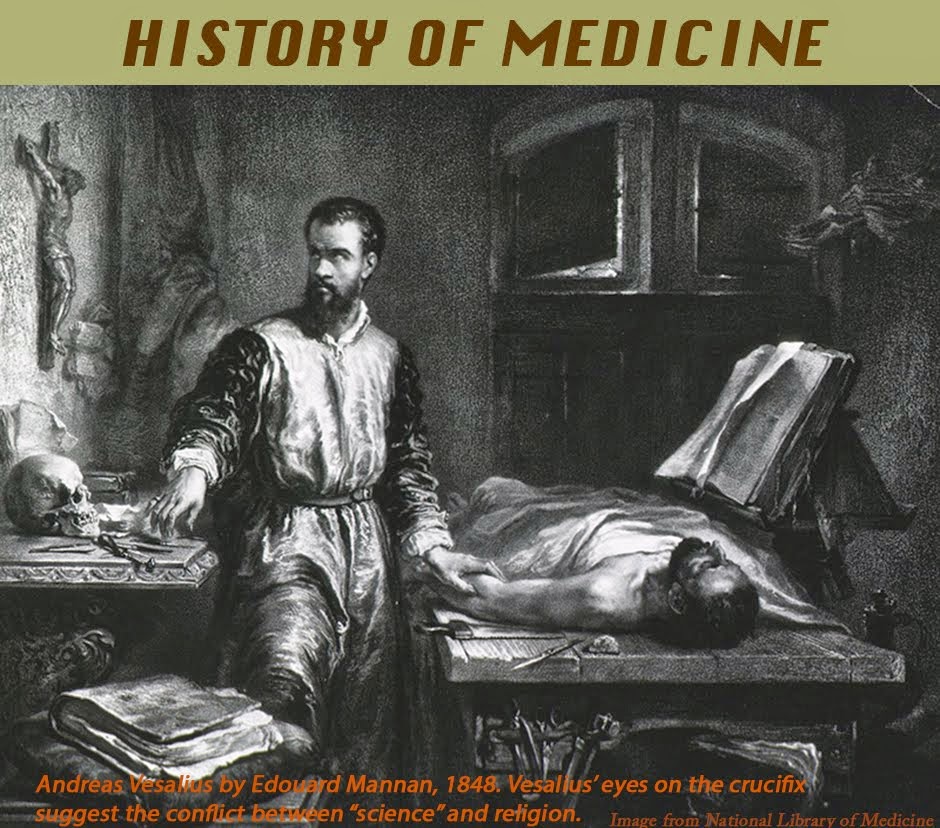Theodor Bilharz and Egypt’s
Ancient Disease
The American parasitologist Norman Stoll, in 1946, delivered an address to an assembly of parasitologists entitled “This Wormy World,” in which he recounted the hundreds of millions of people infested with helminths globally.
Thus, it is not surprising that, in 1851 a young German physician, Theodor Bilharz, bending over an autopsy table in Cairo, Egypt, found in the corpse’s portal vein (that carries blood from the intestines to the liver) a worm, the first ever seen within a blood
 |
| Theodor Bilharz (Wikipedia) |
Why was Bilharz in Cairo? A European presence in Egypt began with Napoleon’s invasion in 1798. The general’s entourage of highly skilled scientists, linguists, and scholars made it clear that progress in medicine and the sciences was virtually nonexistent. A
 |
| Muhammed Ali Pasha (Wikipedia) |
 |
| Antoine Clot "Bey" in Arab dress (Wikipedia) |
 |
| Clot Bey teaching anatomy, Cairo, 1829, unknown artist (Wikipedia) |
In 1837, the hospital and school moved into a 15th century palace along the Nile, in Cairo, and was renamed the Kasr el Ainy Hospital after the builder of the palace. The school flourished and Cairo’s first printing press, purchased in Milan by Ali, turned out more and more texts. Smallpox vaccination was introduced and epidemics subsided. Muhammed Ali awarded the honorific “Bey” to Clot for his service.
In 1848 Ali retired, succeeded in a year by Abbas I, who disliked the French. Clot Bey and the faculty left, and the school and hospital deteriorated. To save the medical service, Abbas turned to Germany, where Wilhelm Griesinger, a professor of pathology in
 |
| Wilhelm Griesinger (Wikipedia) |
Bilharz was perhaps as much a biologist as a doctor and was fascinated with the variety of flora and fauna before his eyes. He discovered two other intestinal parasites and did research on electric eels. He moved to a non-European part of Cairo to mix with locals and took an interest in the language and local customs. He corresponded regularly with naturalists in Germany. In 1858, tragically, he joined an exploratory expedition to the Red Sea under Duke Ernst von Coburg-Gotha, serving as physician to the
 |
| Grave of Bilharz in Cairo (Wikipedia) |
 |
| Published drawings made by Bilharz. Figs 11-14 are of S hematobium (Hathi Trust, click on image to enlarge) |
Schistosomiasis is an old Egyptian disease. Ancient mummies show remnants of the parasite and Arabic texts, including those of Avicenna, describe bloody urine. Wading or swimming in infested water allows the microscopic early stage of the parasite to penetrate the skin and develop into adult worms. Their eggs produce damaging effects on the urinary and intestinal tracts and the liver. The Aswan dam, by enhancing irrigation, resulted in greater exposure of the farmers as they worked barelegged in augmented irrigation channels. The prevalence of the infection rose to over 70% of the population in some areas and was a drain on the economy. Fortunately, in recent years a combination of public health measures and the administration of easy to take, oral medication (praziquantel) has greatly reduced the impact of this formerly widespread and debilitating disease.
The influence of Bilharz was lasting, and he was fondly remembered. With the cooperation of the West German government, the Egyptian government constructed the Theodor Bilharz Research Institute, opened in 1977. Its mission is the control of endemic diseases. And the Kasr El Ainy Hospital is now a major medical center in Cairo.
 |
| Kasr Al Ainy Hospital today (Wikipedia) |
SOURCES:
Lotfy, W M, “Human Schistosomiasis in Egypt: Historical Review, Assessment of the Current Picture, and Prediction of the Future Trends.” J of the Medical Research Institute 2009; 30 (1): 1-7.
El-Dib, N A, “Theodor Bilharz and a Life Trip to Egypt.” Parasitologists United Journal 2019; 12 (1): 3-7.
Mahfouz, N B, The History of Medical Education in Egypt, 1935; Government Press, Bulaq, Cairo.
Stanisch, F W, “Wilhelm Griesinger (1817-1869)” 2007; Dictionary of Medical Biography London, Greenwood, 2007, v.2, 582-3.
Kloos, H and David, R, “The Paleoepidemiology of Schistosomiasis in Ancient Egypt.” 2002; 9 (1): 14-25.
